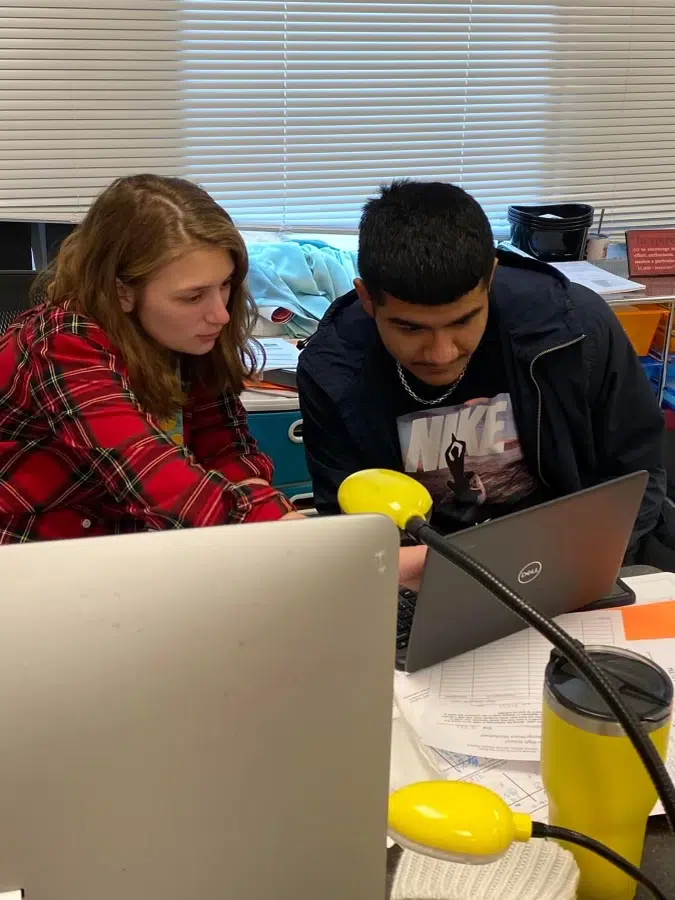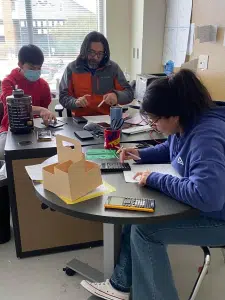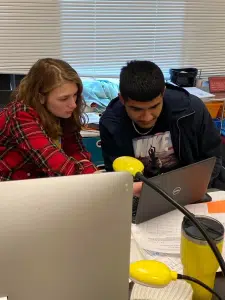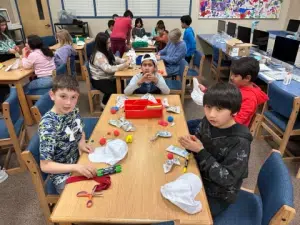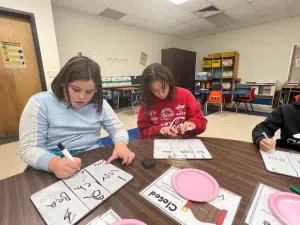(Seguin) – With two years now under its belt, Seguin ISD is delving more into the impact and benefits it believes intersession is having on local school children. It’s also giving folks a closer look at how those six extra allotted days in the school calendar are serving the various groups of students across the district. Since its implementation during the 2021-2022 school year, the Seguin ISD has continued explaining the program.
According to the district, intersession aims to “help address the decline in student performance that typically happens during long breaks; manage the anticipated long-term impact of COVID-19; provide intervention, enrichment and acceleration opportunities and provide more immediate recovery opportunities to reduce knowledge gaps.”
Seguin ISD Superintendent Dr. Matthew Gutierrez says while he’d like to provide detail-oriented data on how intercession is working, it just simply doesn’t exist. The reason he says – it’s not a one size fits all program.
“I think there is some data that you just can’t quantify. You can’t really quantify relationships that are being built – the opportunities for kids to work in a more intimate environment with their teachers. One of the biggest sources of positive feedback that we have received from parents, students and teachers is just that ability to build stronger relationships and connections with one another,” said Gutierrez.
Gutierrez says while the end goal is the same, the road to get there can be quite different for the campuses and each of the respective classrooms.
“The data that we look at for a kindergartener is going to be very different than the data for a high school kid. A high school kid may be going to intersession to catch up on missed assignments, to develop and work on specific skills related to specific standards or they are trying to do credit retrieval. Whereas in kindergarten, you may be working with students on specific letter sounds for three letters and so, it’s not a one size fits all, “said Gutierrez.
Children needing extra attention are invited to attend those additional days a couple of weeks before the fall and spring intersession dates. Special-themed events and activities are usually incorporated to help attract and excite the students. In determining that invitation, Gutierrez says it can be based on a variety of measures.
“Every level, every school, every classroom is looking at really different data to determine which kids are going to come in for intersession. In first grade, the teacher may be using the Istation data which is the universal screener for reading to determine which students are going to come in for intersession. Whereas in fourth grade, a teacher or school may be using the latest benchmark data. Then you go on to the middle school, they may be looking at science data for eighth graders to get them prepared to pass the science STAAR. Whereas at high school, they may be looking at English I data specific to certain standards so students are prepared to take the EOC or it may be a situation where a kid is working on catching up on credits,” said Gutierrez.
Over at Mercer-Blumberg Learning Center, this past week’s graduating class might just be the latest indicator that intersession is good for the district. According to Gutierrez, MBLC Principal Jay Law is definitely a fan.
“When I visited with Mr. Law last week, he had indicated how appreciative he was of the intersession time. He had stated that some of the kids that I was going to see graduate on Friday, March 3 would not be graduating had it not been for the intersession time that they had in the fall and spring. Students in the spring alone at MBLC, they made up 700.5 hours of make-up time and he was just very thankful for that time because there were several kids who would not have been able to graduate otherwise,” said Gutierrez.
During a recent update on the program to the Segun ISD Board of Trustees, the district highlighted a few growth factors seen when following a selection of the students. At Rodriguez Elementary School, Student 1 was described as “showing reading Comp growth on Istation.” Student 2 was “showing steady growth in math on local assessments.” Student 3 was “showing increased vocabulary development and growth in Reading Comp on Istation.”
Teachers were also able to spotlight signs of growth with students asking more questions in a smaller group setting, seeing their excitement to learn, and seeing them work a little harder in class after the intersession experience.
At the secondary level, a positive impact and overall growth were also indicated with some Barnes Middle School students. For example, student 1 showed “growth in both math and RLA on local assessments.” Student 2 showed “recent growth in RLA on local assessments. Student 3 “showing consistent performance in science.”
According to the district, approximately 1,000 students districtwide receive invitations during each designated intersession, which occurs twice a year. Gutierrez says as more and more families become familiar with the program and become accustomed to enjoying intersession, the more they are seeing that kids are not only accepting the invites but ensuring that they are showing up on those days.
“This session, of course, Wednesday was cancelled because of weather and so we only had intersession on Thursday and Friday and our Friday intersession attendance was the best that it had been ever in our two years of doing intersession,” said Gutierrez.
In explaining how this innovative calendar works, Gutierrez says that in the state of Texas, schools are required to provide 75,600 minutes of instruction. In the Seguin ISD, that equates to 171 instructional days – days that are still provided whether intersession dates are included or not.
“Every student in Seguin ISD receives the exact same number of regular instructional days as required by state law so there isn’t one group of students that gets additional instructional days. Those intersession days are specifically geared towards providing students with additional support to close the learning gaps that may exist, and, in some situations, it is not about students not mastering a certain skill. We have instances where some students attend, and they are meeting the standard, but the campuses are working to get them to the master’s level so it’s not just specifically for students who need the intervention. Some campuses are very creative but we do have to keep in mind that staffing is an issue because not every staff member is there at school so it would be impossible to invite 3,000, 5,000 or all of our students to intersession,” said Gutierrez.
Gutierrez believes in ensuring overall success, it is often important to respond to or make sense of some of the criticisms that district families might have with intersession.
“One of the other concerns that we really don’t hear of but there have been a couple of vocal people out there have talked about the childcare and students being denied coming to school, that really hasn’t been an issue. If a parent feels very strongly about their child needing that extra support or if there is a childcare issue, we have not had a situation where a child has been denied. Fortunately, we approve the calendar well in advance to give parents an opportunity to plan for childcare, but we would never put our parents in a position where it would pose as a hardship. In fact, there have been numerous occasions where parents have reached out to a school and arranged for their child to attend intersession even though they weren’t invited,” said Gutierrez.
But a recent online survey about the school calendar gives the district much reason to celebrate the progress of intersession. That’s because Gutierrez says the majority of the respondents supported what the district is trying to accomplish by providing an intersession calendar.
“We live in a community where our parents will certainly let us know about an issue or a decision and when it comes to intersession, we had a survey that went out with huge participation for a survey – 1,000 respondents. Out of that 1,000, there were only 16 who provided negative feedback regarding intersession and so I think that is indicative of the amount of support that we have for intersession whether it’s a parent that believes their child is really benefiting from that additional time at school or if it is a parent that is enjoying that additional time that they have to spend with their child or children,” said Gutierrez.
Of the 1,000 respondents, a total of 241 comments about the overall calendar were provided to the district. Within that total of 241 comments, only 16 comments were described as negative feedback regarding intersession.
Much of the leverage in pushing forward has also been based on the teachers’ thoughts and comments. Gutierrez says while administrators have signed on, so have the teachers.
“We have done a great job with intersession. The feedback that we have received especially from teachers is that they find that time very valuable but as I mentioned earlier, it is my hope that we can continue to see gains in our school district where we can really do some other innovative things with our school calendar,” said Gutierrez.
Gutierrez says intersession is only a strategy to be incorporated for a few more years.
He says the end game is to fill in the gaps and be able to move forward together with all students.
- Photo courtesy Seguin HS Facebook.
- Photo courtesy Seguin HS Facebook.
- Photo courtesy Rodriguez Elementary Facebook.
- Photo courtesy Rodriguez Elementary Facebook.
- Photo courtesy MqQueeney Elementary Facebook.
- Photo courtesy MqQueeney Elementary Facebook.





